Introduction
The electromagnetic, weak, strong and gravitational forces are the four
fundamental interactions of Nature. The first two, unified by the electro-weak
quantum gauge theory, have been tested with high accuracy. The strong
interaction is formulated also as a gauge theory but its strongly coupled nature
circumvented its high precision tests, additionally, the gravitational
interaction does
not even have a satisfactory quantum formulation.
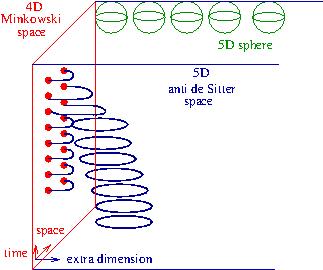
The gauge/gravity duality gives a hope to understand the strong interaction and
quantum gravity in one turn as it connects gauge theories with
string theory (including gravity). This duality is a conjecture, which
relates strongly coupled gauge theories to semi-classical
string theory and the deeply quantum string theory (gravity) to perturbative
gauge theory.
The best chance to show the conjectured equivalence of gauge theories
and string theory is the 't Hooft limit of the maximally supersymmetric
gauge theory as in this limit integrability of the two dimensional
string theory shows up.
In the last twenty years, motivated by particle physics problems, there have been
intensive research and relevant progress in two dimensional integrable
theories.
These theories were solved in the bulk and also with boundaries by determining
exactly
the spectrum of particles together with their scattering data which were then
used to calculate the full spectrum at any finite size.
The objective of our research is to apply the two dimensional integrable
techniques to
the holographic duality and as a result to describe strongly coupled gauge
theories and investigate the quantum domain of
string/gravity theory. In particular, we analyze the following topics.
Spectral problem
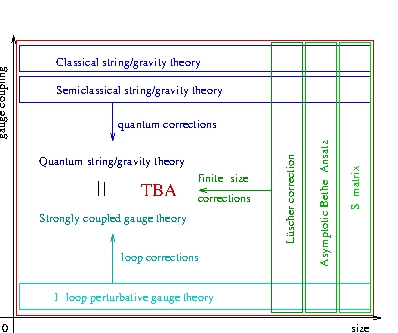
The energies of string states are related to the anomalous dimensions of local
gauge-invariant operators. The 't Hooft coupling of the gauge theory is
proportional to the inverse of the string tension, while the number of colors
is proportional to the inverse of the string coupling. In the planar (large
color) limit, strings do not interact and one has to evaluate the string action
on a two-dimensional cylindrically-shaped worldsheet.
Due to the high number of symmetries, this effective
two-dimensional field theory turned out to be integrable.
The various methods and their validity ranges are shown on the figure.
For weak coupling, perturbative gauge theory is reliable. For large coupling,
the string/gravity theory is (semi) classical, allowing a calculational basis.
These two validity ranges have no overlap. On the other hand, the holographic
correspondence is integrable, thus we can use integrable techniques starting
from infinite size and systematically calculate all finite-size corrections.
The
final solution not only solves the spectral problem, but also gives evidence
for
the holography: gauge theory and string/gravity theory are two equivalent
descriptions of the same phenomena.
String Field Theory Vertex
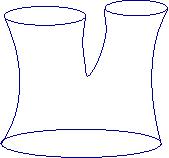
Every conformal field theory (CFT) can be built up from its 2- and 3-point functions.
The 2-point functions are completely determined by the anomalous
dimensions of the operators, while the 3-point functions contain additionally a
coupling constant dependent normalization. These 3-point functions correspond
to form factors of defect/boundary creating operators and are related, on the
string theory side, to the amplitudes of the process in which one big string splits
into two small ones, or alternatively when two small strings join into a big one.
Thus they provide the exact string interactions of the theory, which are required to
develop the quantum theory of strings, namely string field theory (SFT). The amplitude
is called the SFT vertex, which hasn't been calculated explicitly except for the flat
background. We formulated axioms for this SFT vertex, which we solved in the pp-wave
limit.
Quark anti-quark potential
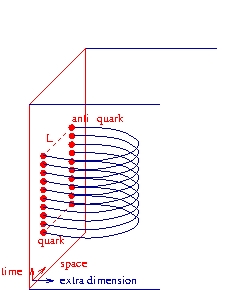 The maximally supersymmetric gauge theory is scale invariant, which forces the
quark--anti-quark potential to be proportional to the inverse of the distance,
as in quantum electrodynamics. So this theory is not confining; nevertheless,
the coefficient (strength) of the potential depends nontrivially on the gauge
coupling. Standard perturbative calculations determine this coefficient in
terms of a power series giving a good approximation for small coupling. For
large coupling, the holographic description can be used to calculate the
string/gravitational partition function on the surface spanning the worldlines
of the quark and anti-quark. At leading order, it amounts to evaluating the
area of the minimal surface, while for finite coupling the quantum
fluctuations must all be included, which is taken into account by a boundary
thermodynamic Bethe Ansatz equation. We proposed a novel formulation
of the BTBA equations, based on real
chemical potentials and additional source terms, which allows a
systematic weak coupling expansion. We expanded our equations to second (double
wrapping) order and tested the results against direct two-loop gauge theory
computations. We find complete agreement.
The maximally supersymmetric gauge theory is scale invariant, which forces the
quark--anti-quark potential to be proportional to the inverse of the distance,
as in quantum electrodynamics. So this theory is not confining; nevertheless,
the coefficient (strength) of the potential depends nontrivially on the gauge
coupling. Standard perturbative calculations determine this coefficient in
terms of a power series giving a good approximation for small coupling. For
large coupling, the holographic description can be used to calculate the
string/gravitational partition function on the surface spanning the worldlines
of the quark and anti-quark. At leading order, it amounts to evaluating the
area of the minimal surface, while for finite coupling the quantum
fluctuations must all be included, which is taken into account by a boundary
thermodynamic Bethe Ansatz equation. We proposed a novel formulation
of the BTBA equations, based on real
chemical potentials and additional source terms, which allows a
systematic weak coupling expansion. We expanded our equations to second (double
wrapping) order and tested the results against direct two-loop gauge theory
computations. We find complete agreement.
Tachyons in AdS/CFT: brane anti-brane system
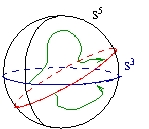
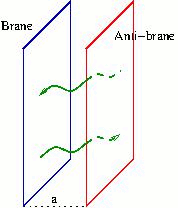 A brane--anti-brane system is an unstable open string system. It is believed
that the branes annihilate with each other and decay into closed strings,
however, there are no non-perturbative results supporting this idea in the
literature for curved backgrounds. Our experience with integrable boundaries
together with our insight into the gauge/string duality put us into a unique
position to solve this relevant problem. We developed a complete description of
the brane--anti-brane system both on the gauge theory and on the integrable
model sides.
A brane--anti-brane system is an unstable open string system. It is believed
that the branes annihilate with each other and decay into closed strings,
however, there are no non-perturbative results supporting this idea in the
literature for curved backgrounds. Our experience with integrable boundaries
together with our insight into the gauge/string duality put us into a unique
position to solve this relevant problem. We developed a complete description of
the brane--anti-brane system both on the gauge theory and on the integrable
model sides.
 The maximally supersymmetric gauge theory is scale invariant, which forces the
quark--anti-quark potential to be proportional to the inverse of the distance,
as in quantum electrodynamics. So this theory is not confining; nevertheless,
the coefficient (strength) of the potential depends nontrivially on the gauge
coupling. Standard perturbative calculations determine this coefficient in
terms of a power series giving a good approximation for small coupling. For
large coupling, the holographic description can be used to calculate the
string/gravitational partition function on the surface spanning the worldlines
of the quark and anti-quark. At leading order, it amounts to evaluating the
area of the minimal surface, while for finite coupling the quantum
fluctuations must all be included, which is taken into account by a boundary
thermodynamic Bethe Ansatz equation. We proposed a novel formulation
of the BTBA equations, based on real
chemical potentials and additional source terms, which allows a
systematic weak coupling expansion. We expanded our equations to second (double
wrapping) order and tested the results against direct two-loop gauge theory
computations. We find complete agreement.
The maximally supersymmetric gauge theory is scale invariant, which forces the
quark--anti-quark potential to be proportional to the inverse of the distance,
as in quantum electrodynamics. So this theory is not confining; nevertheless,
the coefficient (strength) of the potential depends nontrivially on the gauge
coupling. Standard perturbative calculations determine this coefficient in
terms of a power series giving a good approximation for small coupling. For
large coupling, the holographic description can be used to calculate the
string/gravitational partition function on the surface spanning the worldlines
of the quark and anti-quark. At leading order, it amounts to evaluating the
area of the minimal surface, while for finite coupling the quantum
fluctuations must all be included, which is taken into account by a boundary
thermodynamic Bethe Ansatz equation. We proposed a novel formulation
of the BTBA equations, based on real
chemical potentials and additional source terms, which allows a
systematic weak coupling expansion. We expanded our equations to second (double
wrapping) order and tested the results against direct two-loop gauge theory
computations. We find complete agreement.




 A brane--anti-brane system is an unstable open string system. It is believed
that the branes annihilate with each other and decay into closed strings,
however, there are no non-perturbative results supporting this idea in the
literature for curved backgrounds. Our experience with integrable boundaries
together with our insight into the gauge/string duality put us into a unique
position to solve this relevant problem. We developed a complete description of
the brane--anti-brane system both on the gauge theory and on the integrable
model sides.
A brane--anti-brane system is an unstable open string system. It is believed
that the branes annihilate with each other and decay into closed strings,
however, there are no non-perturbative results supporting this idea in the
literature for curved backgrounds. Our experience with integrable boundaries
together with our insight into the gauge/string duality put us into a unique
position to solve this relevant problem. We developed a complete description of
the brane--anti-brane system both on the gauge theory and on the integrable
model sides.